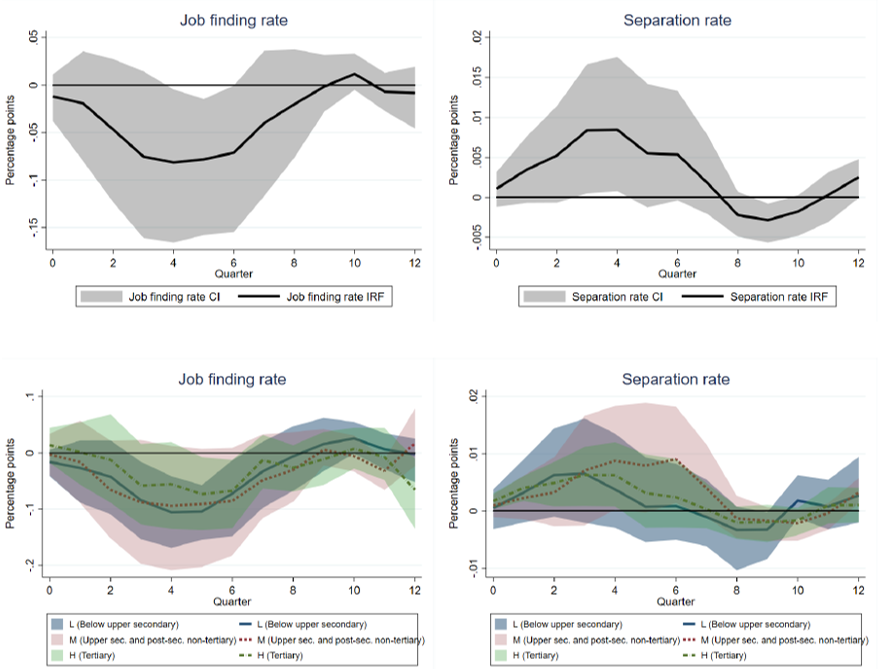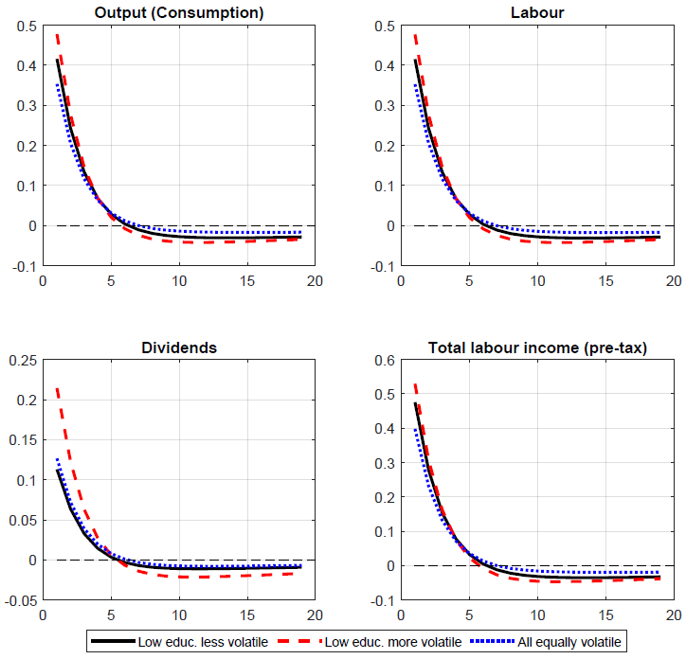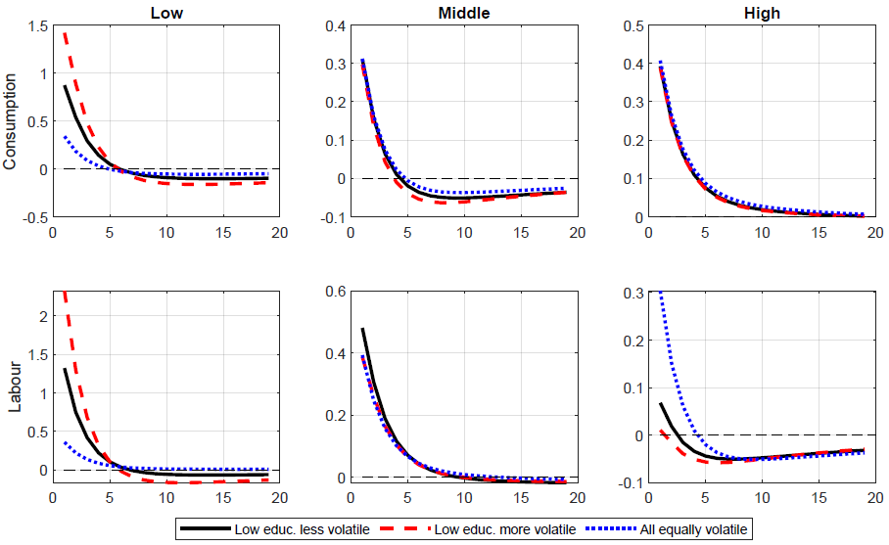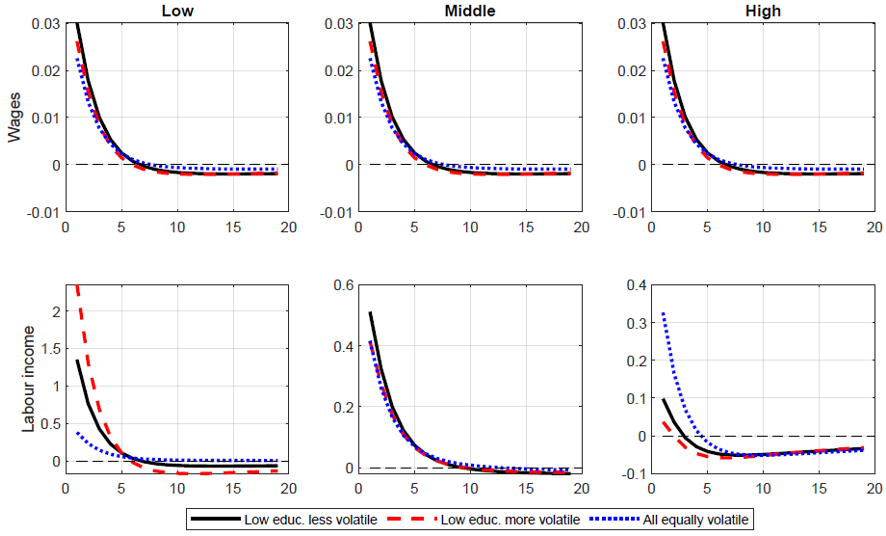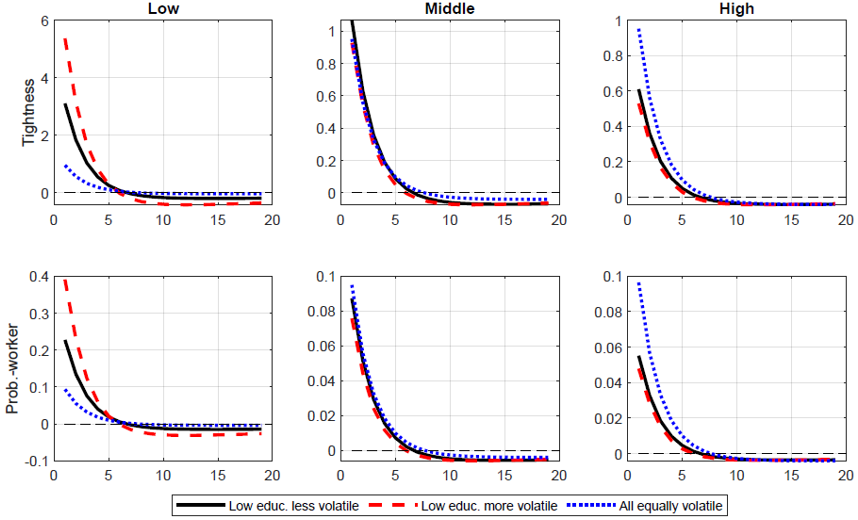References
Auclert, A. (2019): “Monetary policy and the redistribution channel,” American Economic Review, 109, 2333–67.
Broer, T., N.-J. H. Hansen, P. Krusell, and E. Oberg (2019): “The New Keynesian transmission mechanism: A heterogeneous-agent perspective,” Review of Economic Studies, 87, 77–101.
Elsby, M. W., B. Hobijn, and A. Sahin (2010): “The labor market in the Great Recession,” Working Paper 15979, National Bureau of Economic Research.
Elsby, M. W., B. Hobijn, and A. ,Sahin (2013): “Unemployment dynamics in the OECD,” Review of Economics and Statistics, 95, 530–548.
Fujita, S. and G. Ramey (2009): “The cyclicality of separation and job finding rates,” International Economic Review, 50, 415–430.
Hagedorn, M. and I. Manovskii (2008): “The cyclical behavior of equilibrium unemployment and vacancies revisited,” American Economic Review, 98, 1692–1706.
Herman, U., and Lozej, M (2023): “Who gets jobs matters: Monetary policy and the labour market in HANK and SAM,” ECB Working Paper 2850.
Herman, U., and Lozej, M (2023a): “Who gets jobs matters: Monetary policy and the labour market in HANK and SAM,” Central Bank of Ireland Research Technical Paper, vol. 2023, No. 10.
Jarocinski, M., and P. Karadi (2020): “Deconstructing monetary policy surprises – the role of information shocks,” American Economic Journal: Macroeconomics, 12, 1-43.
Kaplan, G., B. Moll, and G. L. Violante (2018): “Monetary policy according to HANK,” American Economic Review, 108, 697–743.
Kramer, J. (2022): “The cyclicality of earnings growth along the distribution – causes and consequences,” mimeo, University of Copenhagen.
Patterson, C. (2023): “The matching multiplier and the amplification of recessions,” American Economic Review, 113, 982–1012.
Roodman, D, M. Ø. Nielsen, J. G. MacKinnon, and M. D. Webb (2019): “Fast and wild: Bootstrap inference in Stata using boottest,” The Stata Journal, 19, 4-60.
Shimer, R. (2012): “Reassessing the ins and outs of unemployment,” Review of Economic Dynamics, 15, 127–148.




